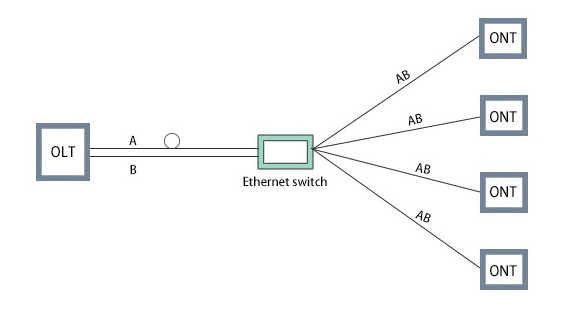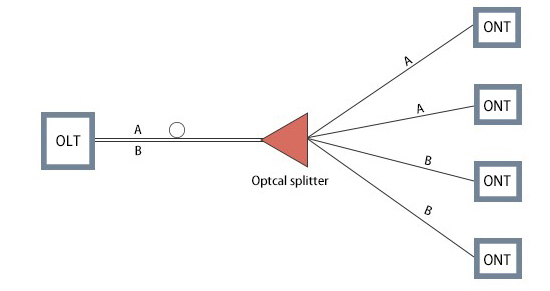Active Optical Network(AON) and Passive Optical Network(PON)
Fiber to the home (FTTH) enables the direct fiber installation from the central point to the end user’s home, providing unprecedented high-speed Internet access. There are two types of systems for implementing FTTH network deployment: AON (active optical network) and PON (passive optical network).
What is AON?
AON is an active optical network. It mainly uses a point-to-point (PTP) network architecture, and each user can have a dedicated optical fiber line. Active optical network refers to from the central office equipment to users the active components or equipment which driven by power have been used, such as switches, routers, the light sources (lasers), optical receivers, optical transceiver modules, optical amplifiers

What is PON?
PON is a passive optical network, a point-to-multipoint network structure, it is the main technology to realize FTTB / FTTH. Passive optical network refers to ODN (optical distribution network) using only optical fibers and passive components, and only needs to use power driven equipment at the signal source and signal receiving end. In a typical PON system, the optical splitter is the key part to separate and collect optical signals transmitted through the network. These splitters for PON are bidirectional. In the downstream direction, multiple services such as IP data, voice, and video are distributed by the OLT located in the central office through broadcast, and are distributed through the 1: N passive optical splitter in the ODN To all ONU units in the PON; in the upstream direction, multiple service information from each ONU is coupled to the same fiber through the 1: N passive optical combiner in the ODN without interference, and finally sent to the OLT at the central office end.

A passive optical network includes an optical line terminal (OLT) installed at the central control station, and a set of supporting optical network units (ONUs) installed at the user site. The optical distribution network (ODN) between the OLT and the ONU contains optical fibers and passive splitters or couplers. Based on different transmission protocols, PON is divided into APON (ATMPON) based on ATM, EPON (EthernetPON) based on Ethernet, GigabitPON
In the AON network, users have dedicated optical fiber lines, which is easy for later network maintenance, capacity expansion, and network upgrades. And AON network covers a wide range about 100 kilometers; PON networks are usually limited to fiber optic cables up to 20 kilometers. AON mainly guides optical signals through active equipment, and PON uses passive devices without power supply, resulting in the AON network deployment cost is higher than PON’s
.
